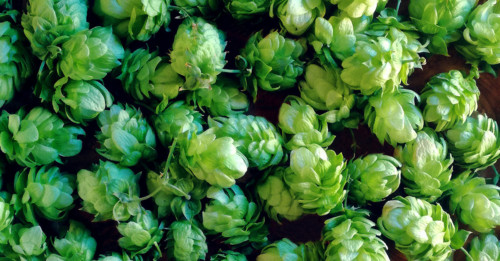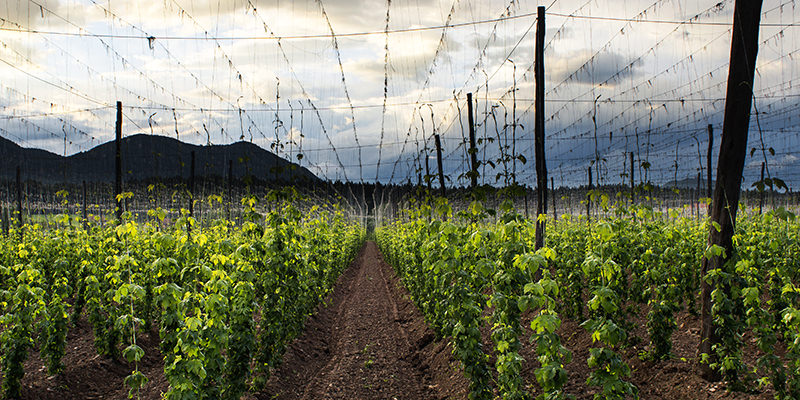Ah, IPA. The most beloved acronym in all of craft beer. (Okay, maybe ABV and IBU have some stake in the game, too.) Suffice to say, whether you’re a fan or not, you’ve heard of IPA, and maybe you’re wondering what all the fuss is about. The short answer: hops. Over history, for a variety of reasons, IPA, or India Pale Ale, has evolved into the most aggressively hopped beer style of them all. If you like bitter, floral, earthy, citrusy, piney, fruity, and, yes once more, bitter flavor notes, you’ll like an IPA. Of course there’s IPA and then there’s IPA—the popularity of the stuff has given rise to many styles. But don’t worry, it’s the good kind of confusing…
American IPA Essential Info
- Color: Pale gold to red, copper
- ABV: 6%-7.5%
- Commercial Examples: Lagunitas IPA, Russian River Brewing Company Blind Pig IPA, Dogfish Head 60 Minute IPA
American IPA is often, like hip hop, divided into two categories: East Coast and West Coast. But lines are blurring and definitions are changing. The only thing you have to know about the difference is this: the term “West Coast IPA” usually refers to a more aggressively hoppy, sometimes powerfully bitter, flavor profile. If someone hands you a bottle or can of West Coast IPA, expect classic Northwest hop flavors like citrus, pine, florals, and a strong, unapologetic bitterness. There will still be malt to balance it out, but if it’s a “West Coast” style, it’s the hops time to shine. So-called “East Coast IPAs” are a bit more balanced, with stronger malt component matching the stronger hops component. They’ll still have that pleasant bitterness IPAs are known for, but it’ll be rounded out—not by “bready” malt but a more balancing, even slightly sweet, clean malt. On either coast, hops are the star here.
Belgian IPA Essential Info
- Color: Pale gold to light amber, often cloudy
- ABV: 6%-12%
- Commercial Examples: Brasserie D’Achouffe Houblon Chouffe Dobbelen IPA Tripel, Flying Dog Raging Bitch Belgian-style IPA
A recent, hybrid style inspired by the uber-popularity of American IPAs, Belgian IPAs are something entirely their own, and actually not really consumed by Belgians. Definitely heavily hopped, often with American hop varieties for greater similarity to the American style, Belgian IPAs may be made with a variety of malts, but are differentiated most strongly by the use of Belgian yeast strains in bottle conditioning (basically carbonating in the bottle by adding more yeast or sugar). These IPAs may be more or less cloudy, with a dry, assertive bitterness that cleanly pierces the malt and yeast-derived flavors. Belgian IPA is a good hybrid for IPA and Belgian beer lovers alike — kind of like a love child of classic European brewing and American craft beer.
English IPA Essential Info
- Color: Medium amber to light copper
- ABV: 5%-7.5%
- Commercial Examples: Summit India Pale Ale, Goose Island IPA, Brooklyn Brewery East India Pale Ale
The story goes that English “India Pale Ale” was just pale ale that some clever 18th Century Brits dosed with extra hops and malt for the journey to India, resulting in higher alcohol content and the bitterness we all know and love. It’s not entirely certain that’s true. What does matter is that, however they came about, England’s IPAs were the first, the great grandfather of a style that’s basically exploded across the land—popularized most aggressively in America. But unlike American IPAs, especially “West Coast” IPAs, English IPAs are less intensely hoppy, with more of a balance between malt and hop flavor and bitterness. Unlike American IPAs, English IPAs may showcase some toasty and bready malt notes. Finally, English yeast may give a bit more estery fruitiness.
Imperial (Double) IPA Essential Info
- Color: Medium amber to light copper
- ABV: 5%-7.5%
- Commercial Examples: Russian River Brewing Co. Pliny the Elder, Bell’s Brewery Hopslam Ale, Dogfish Head 90 Minute IPA
If IPA is like a Pale Ale turned up, a Double IPA is like an IPA turned way up. Often called an “Imperial” IPA (in the beer world, imperial basically just means “really strong”), Double is now the preferred terminology for this mega-hopped style. And the name makes sense, since “double” (if not “triple”) is what you get when you add a bunch of extra hops and malt to yield extra power in the finished product. As in standard (especially West Coast American) IPA, the dominating flavor profile is hoppy (bitterness overlaid with anything from fruit and citrus to pine, florals, earth, and resin). Since any variety of hops can be used (American, English, or Noble Hops)—and a lot of them at that—expect complex flavors, aromas, and a brawny, in-your-face bitterness that’s balanced out, but generally not eclipsed by, some broad-shouldered malts. Hops aren’t just the star here: they’re the diva.
Black IPA Essential Info
- Color: Dark brown to black
- ABV: 5%-10%
- Commercial Examples: Firestone Walker Brewing Co. Wookey Jack, Stone Brewing Co. Sublimely Self-Righteous Ale, Sierra Nevada Blindfold Black IPA
A newer style, sometimes referred to as Cascadian Dark Ale. If Double IPAs are IPAs with the hops turned way up, Black IPAs are IPAs with the roastiness and depth turned way down: hops are still aggressively present, and usually with a West Coast IPA citrus-pine-fruit profile, but a proportion of roasted malt will lend chocolate, coffee, and other dark notes to the overall flavor, with a kind of see-saw of brightness and darkness in the overall taste. Caramel and/or fruit notes might also appear, but there’s very little “sweetness” to be found here. If anything, because this is an IPA, hop flavors and bitterness will stand out in contrast to those dark malt notes. Not heavy or sweet, Black IPA is just dark and intense and often quite strong.
Rye IPA Essential Info
- Color: Pale amber to mahogany
- ABV: 4%-7%
- Commercial Examples: Harpoon’s Rich and Dan’s Rye IPA, Founders Reds Rye IPA, Sixpoint Brewery Righteous Ale
Fortunately (for clarity’s sake), Rye IPA is exactly what it sounds like: an IPA style of beer with some rye added to the malt. The resulting flavor profile still retains the aggressive hoppiness of an American (especially West Coast) IPA, with the spiciness of rye both amplifying that citrusy, piney hops flavor and lending some added complexity to the malt. One of many subcategories in the growing IPA category, and part of an increasing use of rye in beer styles, Rye IPA is good for beer drinkers who like strong flavors.

